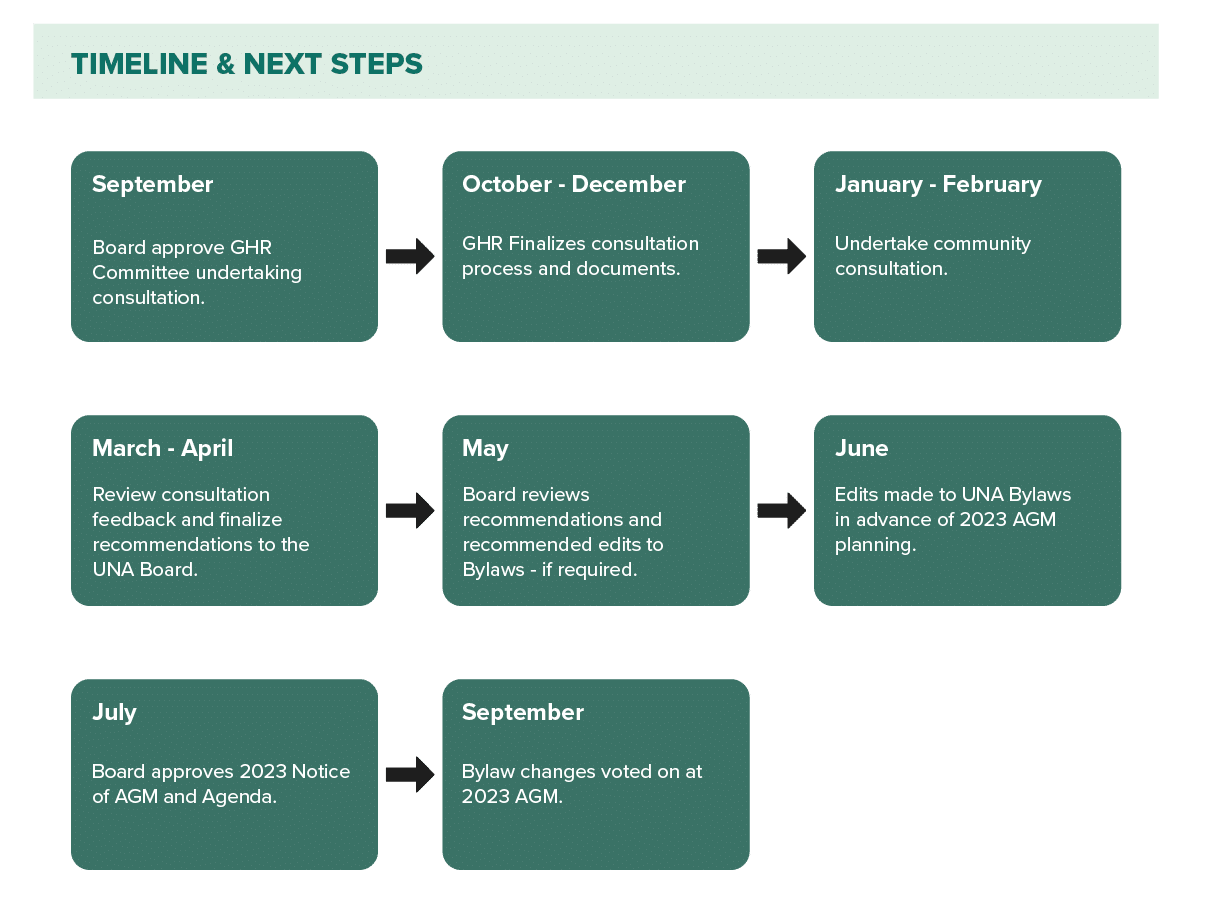Overview
The University Neighbourhoods Association (UNA), through the Governance and Human Resources Committee (GHR Committee), is consulting with the UNA community regarding the possibility of moving to electronic voting for the next UNA Director elections in 2024.
The last fulsome review of UNA election processes took place in 2015. A staff report to the GHR Committee summarizing the history of UNA Electoral Reform is available here.
With online voting becoming more widely utilized – and tying in directly with the UNA’s strategic goal of helping residents to overcome challenges to voting and participating in civic affairs, the UNA is asking for resident feedback on utilizing electronic voting for UNA elections starting in 2024.
Along with the attached Election Process Consultation Package, the GHR Committee will be conducting a community survey and a public open house. The community survey ran from January 12 to February 2 and the public open house took place on Thursday, January 19 at the Wesbrook Community Centre from 7 to 9 p.m. The open house included a presentation from GHR Committee and a discussion on electronic voting.
The GHR Committee will review the results of the consultation, and, using the assessment criteria as outlined in the consultation package, will decide whether to recommend to the UNA Board that it proceed with amendments to the UNA Bylaws to allow for electronic voting.
The UNA is currently targeting a Board decision at its April 2023 meeting. If the Board decides to recommend amending the UNA Bylaws to allow for online voting, the amendments would be subject to the approval of UNA members at the 2023 Annual General Meeting (AGM) and would be in place for UNA elections in 2024.
To vote in a UNA election, you need to be a UNA Member. For more information on how to become a UNA member please visit the UNA website.
 CANCEL SEARCH
CANCEL SEARCH
